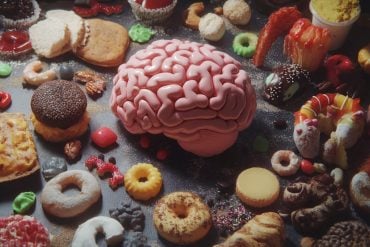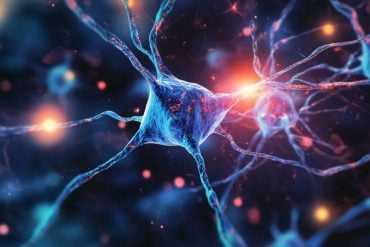Summary: New memories are laid down via different mechanisms in older mice compared to younger mice. Additionally, synaptic changes linked to new memory formation were harder to modify in older mice.
Source: King’s College London
New research from King’s College London and The Open University could help explain why memory in old age is much less flexible than in young adulthood.
Through experiments in mice the researchers discovered that there were dramatic differences in how memories were stored in old age, compared to young adulthood. These differences, at the cellular level, meant that it was much harder to modify the memories made in old age.
Memories are stored in the brain by strengthening the connections between nerve cells, called synapses. Recalling a memory can alter these connections, allowing memories to be updated to adapt to a new situation. Until now researchers did not know whether this memory updating process was affected by age.
The researchers trained young adult and aged mice in a memory task, finding that the animals’ age did not affect their overall ability to make new memories. However, when analysing the synapses before and after the memory task, the researchers found fundamental differences between older and younger mice.
New memories were laid down via a completely different mechanism in older animals compared to younger ones. Further, in older mice the synaptic changes linked to new memories were much harder to modify than the changes seen in younger mice.
The basic biological processes for laying down memories is shared by mammals, so it is likely that memory formation in humans follows the same processes discovered in mice.
Lead researcher Professor Karl Peter Giese, from the Institute of Psychiatry, Psychology & Neuroscience at King’s, said: ‘Our results give a fundamental insight into how memory processes change with age. We found that, unlike in the younger mice, memories in the older mice were not modified when recalled. This ‘fixed’ nature of memories formed in old age was directly linked to the alternative way the memories were laid down, which our research revealed.’

‘Until now it was thought that older people should be able to form memories in just the same way as younger people, so overcoming memory problems would simply involve restoring this ability,’ added Professor Giese. ‘However, our results suggest this is not true, and that there is an important biological difference in how memories are stored in old age compared to young adulthood.’
The results may have implications for conditions where memory recall is a problem, such as post-traumatic stress disorder (PTSD). Professor Giese suggests that aging should be taken into consideration when treating patients with PTSD, since confronting and modifying traumatic memories is a core feature of some psychological treatments such as trauma-focused cognitive behavioural therapy.
Funding: The study is published in the journal Current Biology and is funded by the UK Biotechnology and Biological Sciences Research Council.
Source:
King’s College London
Media Contacts:
Robin Bisson – King’s College London
Image Source:
The image is in the public domain.
Original Research: Open access
“Multi-input Synapses, but Not LTP-Strengthened Synapses, Correlate with Hippocampal Memory Storage in Aged Mice”. Karl Peter Giese et al.
Current Biology doi:10.1016/j.cub.2019.08.064.
Abstract
Multi-input Synapses, but Not LTP-Strengthened Synapses, Correlate with Hippocampal Memory Storage in Aged Mice
Highlights
• Aged mice form contextual memory like young mice, but reconsolidation is impaired
• Only in young mice is contextual memory formation associated with structural LTP
• In aged mice, contextual memory formation correlates with multi-innervated spines
• Inhibition of multi-innervated spines impairs memory in aged but not young mice
Summary
Long-lasting changes at synapses enable memory storage in the brain. Although aging is associated with impaired memory formation, it is not known whether the synaptic underpinnings of memory storage differ with age. Using a training schedule that results in the same behavioral memory formation in young and aged mice, we examined synapse ultrastructure and molecular signaling in the hippocampus after contextual fear conditioning. Only in young, but not old mice, contextual fear memory formation was associated with synaptic changes that characterize well-known, long-term potentiation, a strengthening of existing synapses with one input. Instead, old-age memory was correlated with generation of multi-innervated dendritic spines (MISs), which are predominantly two-input synapses formed by the attraction of an additional excitatory, presynaptic terminal onto an existing synapse. Accordingly, a blocker used to inhibit MIS generation impaired contextual fear memory only in old mice. Our results reveal how the synaptic basis of hippocampal memory storage changes with age and suggest that these distinct memory-storing mechanisms may explain impaired updating in old age.






